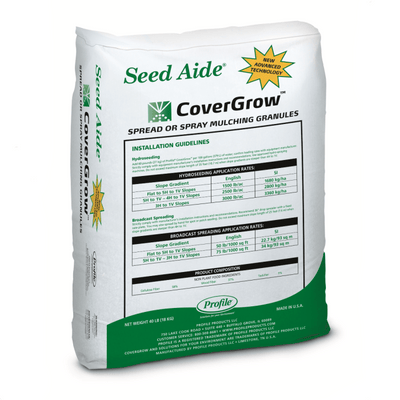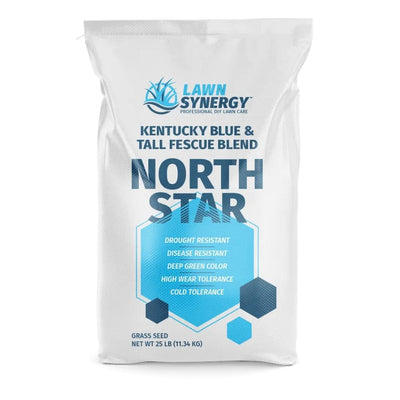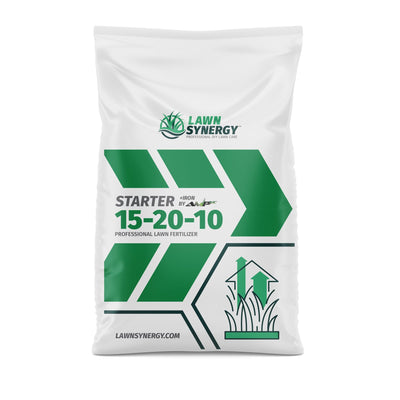If you've ever seeded a lawn only to watch it disappear after one storm, you've likely encountered a common problem: how to keep grass seed from washing away.
Runoff, poor soil prep, and overwatering can ruin even the best seeding job. Fortunately, we're here to provide real solutions to protect your seed, improve germination, and grow a healthy lawn in challenging spots like slopes or clay-heavy soils.
What this article covers:
- Why Grass Seed Washes Away
- When Your Lawn Is Most at Risk
- How to Prepare the Soil to Hold Seed Better
- Techniques to Keep Seeds in Place
Why Grass Seed Washes Away
Grass seed is small, lightweight, and highly mobile until it roots into the soil. When it sits on hard-packed or sloped ground, it's especially vulnerable to being moved by wind, water, or even foot traffic.
The problem compounds when heavy watering or unexpected rain loosens the topsoil before the seed has had time to anchor.
Without proper protection, seed displacement leads to patchy growth, wasted product, and bare zones that quickly invite weeds. In most cases, the issue isn't the seed. It was what happened after the application.

When Your Lawn Is Most at Risk
Certain lawn conditions and timing windows increase your chances of seed washout. Knowing these risks upfront helps you apply smarter techniques.
Slopes and Hillsides
Gravity works against you here. Water naturally runs downhill, picking up seed and soil with it. The steeper the grade, the greater the erosion potential, especially if the soil is bare or compacted.
Hard Clay or Crusted Soil
Soil that doesn't absorb water quickly causes pooling and surface runoff. Instead of soaking into the seedbed, water flows across the surface and carries seed away.
Heavy Rain Within 48 Hours of Seeding
Even if you follow a great watering schedule, you can't control storms. If rain hits before germination begins, your seed can float, shift, or pool into low spots.
Improper Watering Practices
Many homeowners ask how often to water grass seed, but fewer consider how watering pressure affects erosion. Watering too much or with the wrong nozzle will dislodge your seed and saturate the soil before roots take hold.
How to Prepare the Soil to Hold Seed Better
The way you prepare your seedbed directly impacts how well the seed stays in place during watering and rainfall. Grass seed needs a textured, stable environment that promotes root anchoring while resisting movement.
Every step in this process improves seed retention and long-term germination success.

Step 1: Loosen the Top Inch
Compacted or crusted soil creates a slick surface that sheds water and dislodges seed. Loosening soil improves infiltration and increases contact points between seed and soil particles, both critical for root initiation and erosion prevention.
Use a steel rake or power rake to break up the top 1 to 1.5 inches of soil. This increases surface friction and allows the seed to settle slightly below grade, where it's protected from runoff.
Step 2: Level and Lightly Grade
Uneven areas collect water in puddles or accelerate runoff in low spots. On the other hand, level soil absorbs water more uniformly. Gentle grading prevents fast water flow, giving seed a chance to adhere and germinate before it moves.
To remedy this, use a hard-tooth rake or leveling rake to smooth the area and gently grade slopes away from walkways or structures. On hillsides, create subtle terraces or check lines to slow water movement.
Step 3: Fertilize the Root Zone
Apply a high-phosphorus starter fertilizer like Starter 15-20-10 before seeding. Phosphorus doesn't move much in soil, so it must be in place from day one to support strong root formation.
Deeper, faster root development helps seedlings anchor in place more quickly, reducing the time they're vulnerable to surface washout.
Bonus tip: If your soil is especially poor or clay-heavy, consider blending in organic compost or a light application of 0-46-0 Triple Superphosphate to improve nutrient access and soil structure.

Techniques to Keep Seeds in Place
Once your soil is prepped, use these time-tested methods to physically hold seed where you want it.
Use Straw Mulch (But Not Hay)
A thin layer of clean straw (no more than 1/4 inch deep) helps protect the seedbed without blocking sunlight or trapping moisture. Avoid hay, which often contains weed seeds.
Apply Erosion Control Blankets on Slopes
For steep or heavily washed-out areas, use biodegradable seed blankets. These mesh-reinforced mats secure the seed and hold moisture while germination occurs. Once roots establish, the blanket breaks down.
Rake and Press Seed Lightly Into the Soil
After broadcasting, lightly rake the seed into the top 1/8 inch of soil, then roll the area with a lawn roller or tamp with a board to ensure contact. This simple step dramatically reduces washout and improves germination.
Use Tackifier or Hydro-Mulch
If you're covering large areas or steep banks, a tackifier mixed with mulch helps bond seed to the soil. This method is commonly used in professional hydroseeding applications and can be DIY'd with the right equipment.
Conclusion
Knowing how to keep grass seed from washing away is essential to any successful seeding or lawn rehab project. With the right soil prep, erosion control methods, and watering techniques, you can give your seed the stable environment it needs to germinate — and stay put.
At Lawn Synergy, we bring estate-level results to homeowners with the right seed and hands-on support. Whether you're reseeding a slope or planning a full lawn refresh, we're here to help you protect your investment and grow with confidence.
Need help picking a product or designing a slope-stabilized seeding plan? Just reach out.
Ready to learn more about lawn care? Check out these articles:





